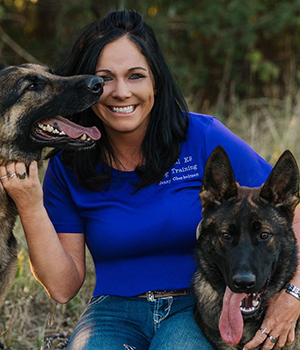Important Dog Educating Techniques for a Lifetime of Great Habits
Effective canine training is fundamental to cultivating a well-behaved friend that improves our lives. Essential techniques, such as favorable support and consistent command training, not just enhance obedience yet additionally strengthen the bond between proprietor and animal. Understanding canine actions and utilizing socializing methods can avoid possible issues prior to they emerge. The trip does not finish with standard commands; attending to behavioral obstacles needs a nuanced approach that several neglect. What are the critical elements that can transform your training experience and ensure long-term results?
Comprehending Dog Habits

In addition, understanding the innate instincts and drives of a canine-- such as prey drive, social interactions, and territorial actions-- makes it possible for fitness instructors to anticipate and handle details habits. For circumstances, a canine with a solid victim drive may call for various strategies than one that is a lot more socially inclined.
Furthermore, early socializing and exposure to numerous environments considerably affect a pet dog's actions and temperament. Favorable experiences during important developing periods can lead to well-adjusted grown-up dogs, whereas negative experiences might result in anxiety or aggressiveness.
Favorable Support Techniques
Among the various pet dog training methods, positive support approaches attract attention for their performance and capacity to enhance the bond between pet dog and trainer (Ohana K9 Academy). This approach highlights rewarding desired behaviors rather than penalizing unwanted ones, cultivating an extra cooperative and trusting connection
Favorable support can take lots of types, consisting of treats, praise, toys, or playtime. The trick is to offer instant benefits when the pet displays the preferred behavior, enabling them to make the link in between the action and the positive end result. For example, if a pet rests on command, offering a treat as soon as possible strengthens that actions, making it most likely to be repeated.
Consistency is important in favorable reinforcement training. Fitness instructors should use the exact same signs and incentives to stay clear of confusing the dog. Additionally, differing the incentives can preserve the canine's passion and motivation, transitioning from constant treats to periodic appreciation or play as the dog masters the actions.

Standard Command Training
Structure on the structure developed via positive support techniques, basic command training functions as an important action in establishing an go to this site accommodating canine. This training typically encompasses crucial commands such as "rest," "stay," "come," and "down - Ohana K9 Academy." Each command plays a crucial duty in promoting reliable communication in between the pet dog and its owner, boosting the general bond
To start fundamental command training, choose a quiet environment devoid of distractions. Begin with short, focused sessions lasting no greater than 5 to 10 minutes to keep your canine's attention. Use high-value treats as rewards, ensuring the canine links right actions with positive results. When showing a command, make use of a clear, consistent spoken cue accompanied by hand signals to strengthen understanding.
Patience is essential; pet dogs might need numerous reps to grasp commands totally. Slowly raise the complexity by introducing variations or distractions when your canine accurately responds. Regular practice enhances learned commands, solidifying them in your pet dog's habits repertoire. Eventually, standard command training not just promotes obedience yet also boosts security and helps with enjoyable interactions during strolls and play, preparing for advanced training methods in the future.
Socialization Strategies
In the world of dog training, socializing techniques are essential for growing a well-adjusted and positive canine buddy. Effective socialization includes exposing your pet dog to a selection of atmospheres, individuals, and various other animals in a controlled and favorable manner. The key objective is to assist your pet dog establish a comfort degree with diverse experiences, which can dramatically decrease fear and anxiety in unfamiliar situations.
Begin socializing during the crucial developing window of 3 to 14 weeks, when young puppies are most receptive to brand-new experiences. Present your pet dog to various setups, such as parks, metropolitan areas, and homes with various other pet dogs. Guarantee these encounters declare by utilizing deals with and praise to reinforce etiquette.
Group training courses are an exceptional way to reveal your pet dog browse around here to other pet dogs and individuals in a structured atmosphere. This permits for monitored communications, assisting your pet discover appropriate social signs. Normal trips and playdates with courteous canines can even more enhance social abilities.
Attending To Behavioral Issues
Dealing with behavioral concerns in canines is a critical aspect of training that requires a systematic technique and understanding of canine actions. Common issues such as barking, chewing, aggressiveness, and anxiety can stem from numerous aspects, including absence of socializing, not enough workout, and even clinical concerns.

Additionally, developing a structured routine that home includes routine workout and mental excitement can dramatically ease behavior problems. Interactive playthings can keep a canine involved and lower devastating propensities. In instances of serious aggression or stress and anxiety, talking to a professional dog trainer or a veterinary behaviorist may be essential.
Final Thought
In conclusion, effective pet training techniques, including positive support, fundamental command training, and socializing, are important for fostering great behavior throughout a pet's life. Dealing with behavior problems with a systematic method not only enhances obedience yet additionally reinforces the bond between canines and their owners.